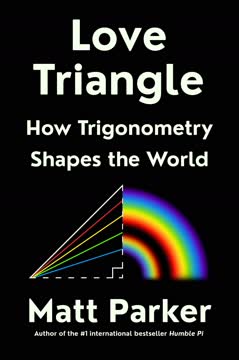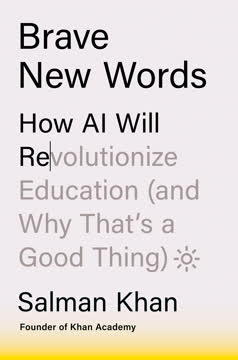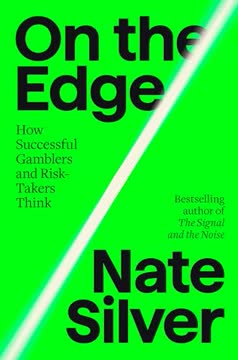Key Takeaways
1. Bayes' theorem revolutionizes probability and decision-making
"Bayes' theorem is to the theory of probability what Pythagoras' theorem is to geometry."
Origins and importance: Thomas Bayes, an 18th-century Presbyterian minister, developed a simple yet powerful equation that fundamentally changed how we think about probability. Bayes' theorem allows us to update our beliefs based on new evidence, providing a framework for rational decision-making under uncertainty.
Key concepts:
- Prior probability: Our initial belief about something before seeing new evidence
- Likelihood: The probability of seeing the evidence given our hypothesis
- Posterior probability: Our updated belief after considering the new evidence
Bayes' theorem has applications in various fields, including:
- Medicine: Interpreting test results and diagnosing diseases
- Science: Evaluating hypotheses and analyzing experimental data
- Technology: Spam filtering, recommendation systems, and machine learning
- Finance: Risk assessment and investment strategies
2. Frequentism vs. Bayesianism: The great statistical divide
"Aristotelian deductive logic is the limiting form of our rules for plausible reasoning."
Two schools of thought: The field of statistics has been divided between two main approaches: frequentism and Bayesianism. This divide has significant implications for how we interpret data and make decisions.
Frequentism:
- Focuses on long-run frequencies of events
- Uses p-values and confidence intervals
- Assumes fixed, unknown parameters
Bayesianism:
- Incorporates prior knowledge and updates beliefs
- Uses credible intervals and posterior probabilities
- Treats parameters as random variables
While frequentism has dominated scientific research for decades, Bayesian methods are gaining popularity due to their ability to handle complex problems and incorporate uncertainty more naturally.
3. The replication crisis and the need for Bayesian thinking in science
"Many experimentalists, when asked what 5% significance means, often say that the probability of the null hypothesis is 0.05."
The problem: In recent years, many scientific fields have faced a replication crisis, where published findings fail to be reproduced in subsequent studies. This crisis has revealed fundamental flaws in how research is conducted and interpreted.
Causes of the replication crisis:
- Misunderstanding of p-values and statistical significance
- Publication bias favoring positive results
- Researchers' degrees of freedom in data analysis (p-hacking)
Bayesian solutions:
- Incorporating prior probabilities to evaluate the plausibility of results
- Using Bayes factors to quantify evidence for competing hypotheses
- Emphasizing effect sizes and uncertainty rather than binary significance
By adopting Bayesian methods, scientists can produce more reliable and reproducible research, leading to a stronger foundation for scientific knowledge.
4. Superforecasting: Applying Bayesian principles to predict the future
"Forecasters keep score. Note your forecasts down, publicly, and see how many of them come true, and whether your 60 percent guesses come true 60 percent of the time."
The power of probabilistic thinking: Superforecasters are individuals who consistently make accurate predictions about future events. Their success is largely due to their application of Bayesian principles in their thinking process.
Key strategies of superforecasters:
- Using base rates as starting points (prior probabilities)
- Continuously updating beliefs with new information
- Expressing uncertainty in precise probabilities
- Seeking diverse sources of information
- Collaborating and aggregating predictions
By adopting these Bayesian-inspired techniques, anyone can improve their ability to make better predictions and decisions in various aspects of life, from personal choices to professional forecasting.
5. The Bayesian brain: How our minds process information
"What we experience is best described as a Bayesian inference about the causes of sensory data."
A new model of cognition: The Bayesian brain hypothesis suggests that our brains function as prediction machines, constantly generating and updating models of the world based on sensory input and prior knowledge.
Key aspects of the Bayesian brain:
- Top-down predictions vs. bottom-up sensory input
- Prediction error as the driving force of perception and learning
- Hierarchical processing of information
This model explains various phenomena, including:
- Optical illusions and perceptual biases
- The effects of expectations on sensory experiences
- Learning and adaptation to new environments
Understanding the Bayesian nature of our brains can help us better appreciate how we perceive and interact with the world around us.
6. Consciousness as controlled hallucination: A Bayesian perspective
"We don't just passively perceive the world: we construct it, or a model of it."
Rethinking consciousness: The Bayesian view of the brain suggests that our conscious experience is not a direct representation of reality, but rather a controlled hallucination based on our predictions and sensory input.
Key implications:
- Our perception is actively constructed, not passively received
- Attention is directed towards prediction errors
- Hallucinations and delusions can be understood as failures in the prediction-correction process
This perspective offers new insights into various mental phenomena:
- The nature of dreams and altered states of consciousness
- The mechanisms underlying mental illnesses like schizophrenia
- The role of expectations in shaping our subjective experiences
By recognizing the constructive nature of our conscious experience, we can better understand the limitations and biases of our perception.
7. From perception to action: The free energy principle
"Desire and prediction are the same thing."
A unifying theory: The free energy principle, proposed by Karl Friston, extends the Bayesian brain hypothesis to encompass not just perception but also action and decision-making.
Key concepts:
- Free energy: A measure of the difference between our predictions and reality
- Active inference: The idea that we act to minimize prediction errors
- Homeostasis and allostasis: Maintaining internal stability through prediction and action
This principle suggests that all biological systems, from single cells to complex organisms, strive to minimize free energy by:
- Updating internal models (perception)
- Changing the environment to match predictions (action)
The free energy principle offers a unified framework for understanding cognition, behavior, and even the nature of life itself.
8. Practical applications of Bayesian thinking in everyday life
"Most of us either believe things or we don't. And that means when evidence comes in that contradicts some belief, we have to either reject the evidence or change the belief."
Improving decision-making: Adopting a Bayesian mindset can lead to better reasoning and decision-making in various aspects of life.
Practical strategies:
- Expressing beliefs as probabilities rather than absolutes
- Actively seeking disconfirming evidence
- Updating beliefs gradually based on new information
- Considering base rates when evaluating new claims
- Recognizing the role of prior knowledge in shaping perceptions
By applying these principles, we can:
- Reduce cognitive biases and improve critical thinking
- Make more accurate predictions and assessments
- Navigate uncertainty more effectively in personal and professional contexts
- Foster a more nuanced and flexible worldview
Embracing Bayesian thinking allows us to approach the world with greater rationality and openness to new information, leading to better decisions and a deeper understanding of the complex realities we face.
</instructions>
Last updated:
FAQ
What's Everything Is Predictable about?
- Focus on Bayesian Statistics: The book explores how Bayesian statistics can be used to understand and predict various phenomena in our world.
- Bayes' Theorem: It introduces Bayes' theorem, a fundamental concept in probability that helps update beliefs based on new evidence.
- Real-World Applications: The author illustrates the practical implications of Bayesian thinking in fields like medicine, law, and artificial intelligence.
- Interdisciplinary Approach: Insights from psychology, neuroscience, and statistics are combined to present a comprehensive view of decision-making.
Why should I read Everything Is Predictable?
- Understanding Uncertainty: The book provides insights into navigating uncertainty by applying Bayesian principles.
- Enhances Critical Thinking: It encourages readers to question assumptions and understand the probabilistic nature of knowledge.
- Engaging and Accessible: Tom Chivers uses relatable examples and anecdotes to explain complex concepts, making them accessible to a broad audience.
- Practical Decision-Making: Offers tools to evaluate risks and benefits more effectively in personal and professional contexts.
What are the key takeaways of Everything Is Predictable?
- Bayesian Framework: Emphasizes viewing beliefs and decisions through a Bayesian lens, updating prior probabilities with new evidence.
- Avoiding Extremes: Advises against assigning probabilities of zero or one, suggesting a range to account for uncertainty.
- Real-World Implications: Discusses the role of Bayesian thinking in addressing the replication crisis in science and improving decision-making.
What is Bayes' theorem, as defined in Everything Is Predictable?
- Basic Definition: Bayes' theorem is a formula for updating the probability of a hypothesis based on new evidence.
- Formula Breakdown: It states that the probability of event A given event B is proportional to the probability of event B given event A, multiplied by the prior probability of A, divided by the probability of B.
- Practical Example: The book uses medical testing to illustrate how Bayes' theorem can lead to counterintuitive results.
How does Everything Is Predictable explain the concept of prior probabilities?
- Definition of Prior Probabilities: They represent initial beliefs about the likelihood of a hypothesis before considering new evidence.
- Influence on Decision-Making: These priors significantly affect how new data is interpreted, making them essential in any analysis.
- Dynamic Updating: Prior probabilities should be updated as new evidence emerges, allowing for more accurate predictions.
What are some real-world applications of Bayesian statistics discussed in Everything Is Predictable?
- Medical Testing: Bayes' theorem is used to interpret medical test results, emphasizing the importance of prior probabilities.
- Legal Evidence: Bayesian reasoning can be applied in legal contexts to evaluate the strength of forensic evidence.
- Artificial Intelligence: Bayesian methods play a role in AI, where algorithms predict outcomes based on prior data and new information.
How does Everything Is Predictable address the replication crisis in science?
- Critical Examination: Discusses the replication crisis, where many studies fail to reproduce results, questioning research reliability.
- Statistical Practices: Argues that frequentist methods, particularly p-values, contribute to this crisis by encouraging statistically significant results over true findings.
- Bayesian Solutions: Suggests Bayesian methods, which incorporate prior knowledge, could help mitigate these issues.
How does Everything Is Predictable differentiate between Bayesian and frequentist statistics?
- Bayesian Approach: Focuses on updating beliefs based on prior knowledge and new evidence, allowing for flexible data interpretation.
- Frequentist Approach: Relies on p-values and the null hypothesis, often leading to binary decisions without considering prior beliefs.
- Implications for Science: Frequentist methods can lead to misleading conclusions, while Bayesian methods provide a coherent framework for understanding uncertainty.
What is the significance of prior probabilities in Everything Is Predictable?
- Foundation of Bayesian Thinking: Prior probabilities influence how new information is interpreted, shaping expectations and guiding decisions.
- Dynamic Updating: They should be updated with new evidence for more accurate predictions.
- Real-World Examples: Examples like medical testing show how prior probabilities affect outcomes and interpretations.
How does Everything Is Predictable relate to decision-making?
- Bayesian Decision Theory: Provides a structured approach to making choices under uncertainty by combining prior beliefs with new evidence.
- Utility and Expected Value: Discusses these concepts to quantify benefits and risks, aiding in rational evaluation of options.
- Practical Applications: Understanding Bayesian decision-making can improve everyday choices, from financial investments to health decisions.
What is the role of confirmation bias in Everything Is Predictable?
- Understanding Confirmation Bias: It's the tendency to favor information that supports existing beliefs, leading to skewed perceptions.
- Bayesian Perspective: A Bayesian approach can help mitigate confirmation bias by encouraging consideration of alternative hypotheses.
- Real-World Implications: Recognizing this bias is essential for making rational decisions and forming accurate beliefs.
What are the best quotes from Everything Is Predictable and what do they mean?
- "Life isn’t chess, a game of perfect information, one that can in theory be 'solved.' It’s poker, a game where you’re trying to make the best decisions using the limited information you have.": Emphasizes the uncertainty in real-life decision-making.
- "Bayes’ theorem is strange. It is a simple equation... but it has profound implications.": Highlights the paradox of Bayes' theorem being easy to understand yet capable of explaining complex phenomena.
- "You can’t make sense of pretty much any form of medical testing without invoking Bayes.": Underscores the critical role of Bayesian statistics in interpreting medical tests.
Review Summary
Everything Is Predictable by Tom Chivers explores Bayesian statistics and its applications in science, decision-making, and everyday life. Readers praise Chivers' accessible writing style, engaging explanations, and use of real-world examples. The book covers the history of Bayesian thinking, contrasts it with frequentist approaches, and discusses its relevance to the replication crisis in science. While some found certain sections challenging or repetitive, many recommend it as an insightful introduction to Bayesian reasoning for a general audience, highlighting its potential to reshape how we understand uncertainty and make predictions.
Similar Books










Download PDF
Download EPUB
.epub digital book format is ideal for reading ebooks on phones, tablets, and e-readers.




